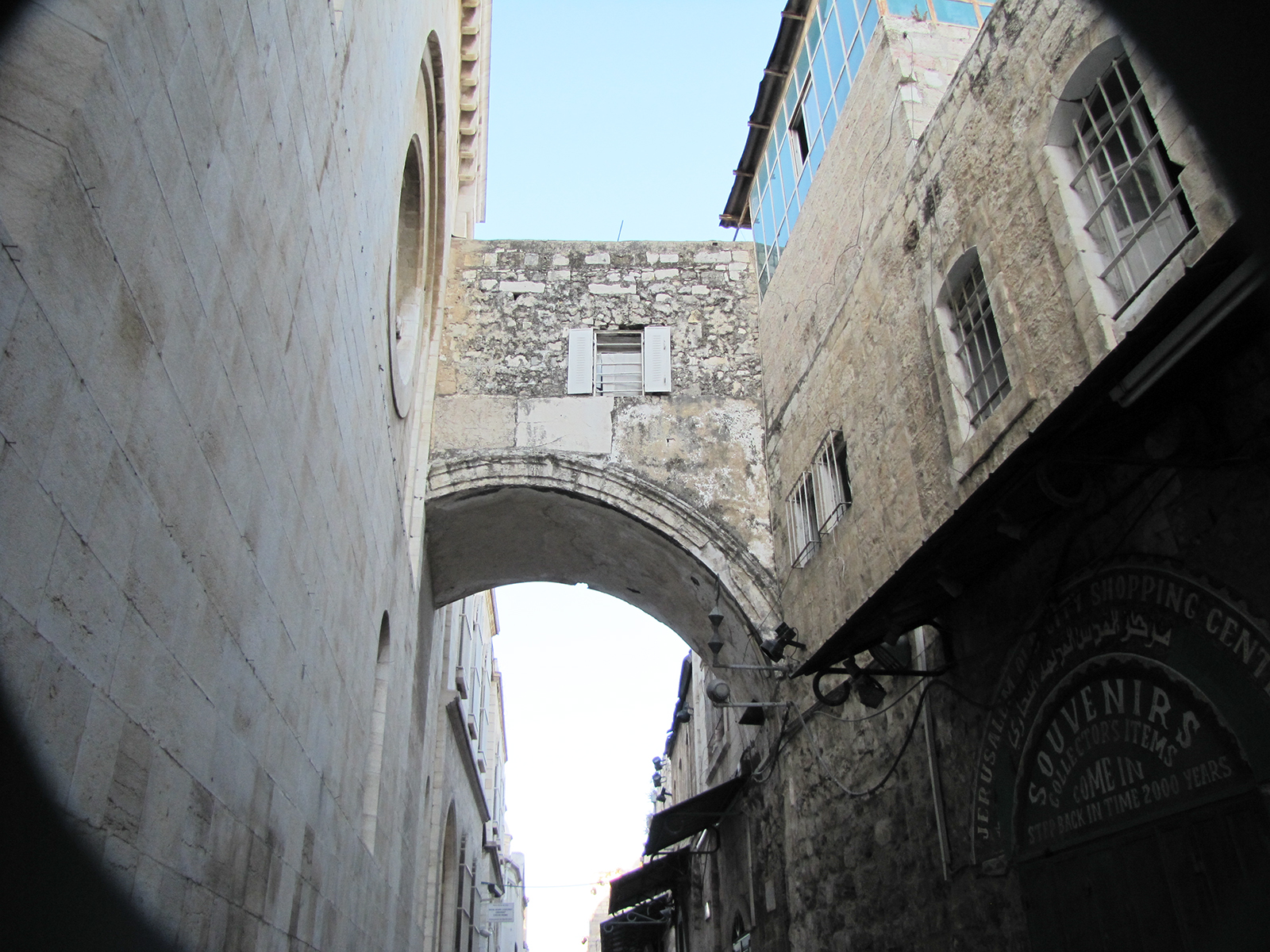
Section F Roman, Muslim, and Crusader Periods
Chapter 60 - Ecce Homo (Roman)
One of the areas the Romans attacked when they laid siege to Jerusalem in 70 AD was the stronghold of Fort Antonia, which Jewish rebels had taken over and barricaded themselves inside of when they drove the Romans out in 66 AD. In order to reach the north wall of Fort Antonia, the Romans had to build a ramp across the Struthion Pool that served as a moat on the north wall of the fort. The ramp they built was supported by an arch, and this arch is known today as the Ecce Homo Arch. Ecce Homo is Latin for “Behold the man”.
The arch got its name because it was once believed that the ancient pavement that covers the Struthion Pool had been the floor of Fort Antonia. If that were true, this could have been where Pilate stood when he spoke to the crowd and condemned Jesus with those words. The pavement has since been identified as the stone covering built by Hadrian in 135 AD when the Struthion Pool was covered.
The Struthion Pool was an open air reservoir in the days of the Hasmoneans and Herod. It collected rainwater that ran from the roofs of buildings. In 135 Hadrian covered the Struthion Pool and supported the pavement with underground arches that can be seen yet today at the north end of the Western Wall tunnels. The pavement that Hadrian laid over the Struthion Pool in 135 served as the ground of a Roman market. This pavement can be seen inside the Convent of the Sisters of Zion.
Inscribed on one of the stones in the pavement inside the convent is a pattern for a Roman game. It was previously assumed that the pavement was from the floor of Fort Antonia where Jesus stood trial before Pilate. It was also imagined that the game could have been played by Roman soldiers as they waited for Jesus’ trial and execution. Recent and more accurate archaeology place this pavement on the streets of the open market from around 135 AD. The game board that is etched into the paving stone was indeed cut by Roman soldiers, but most likely by soldiers waiting in the streets at the market, not at Christ’s trial.
The arch that supported the ramp the Romans used to attack Fort Antonia still stands today and spans the Via Dolorosa. In 135 after Hadrian had defeated the Jews in the Second Jewish Revolt (Bar Kochba Revolt) this same arch was converted into a monument to his victory. It was similar in purpose to the Arch of Titus in Rome commemorating the 70 AD victory over the Jews. The Ecce Homo Arch was flanked by two smaller arches, one of which can still be seen in the basement of the Convent of the Sisters of Zion.

The Ecce Homo Arch remaining from the Roman attack on Fort Antonia in 70 AD. In this photo looking east, the Convent of the Sisters of Zion is on the right. One sideof the original arch is still seen in the convent wall.